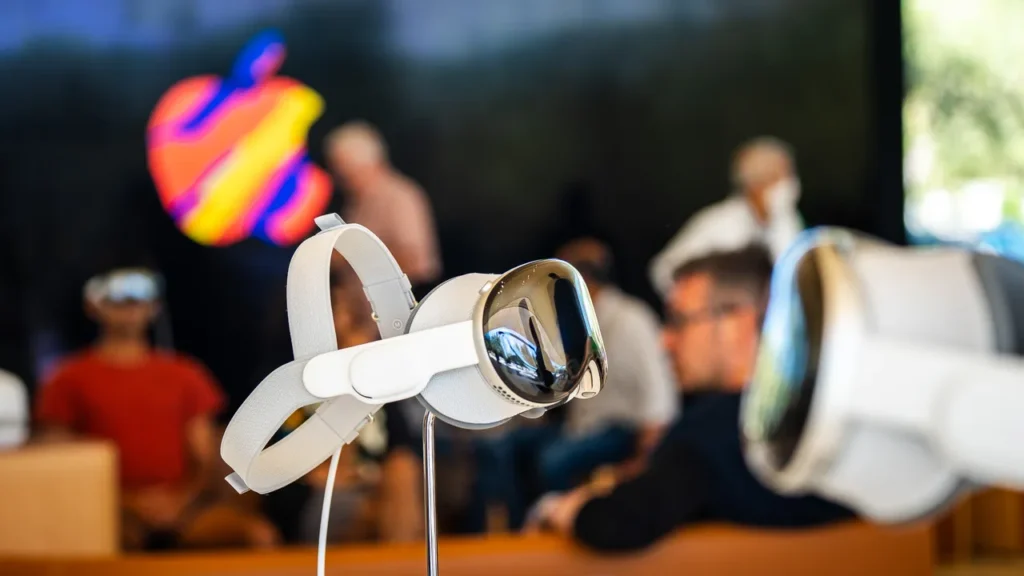Notwithstanding its technological superiority, Apple’s Vision Pro headset has had trouble gaining a sizable portion of the market. Estimates from market analysts imply that less than 500,000 Vision Pro units will be sold by the end of the year, which is a shortfall from the projected sales figures. The low performance of Apple’s sophisticated spatial computing device highlights its limited appeal and expensive price tag.
Though sales are disappointing, there is cause for hope regarding Apple’s VR platform’s future. In 2025, Apple is expected to release a less expensive version of the Vision Pro headset, according to a recent report from Bloomberg that quotes market research firm IDC. Experts predict that sales of the device will double over the previous model, suggesting that this calculated move might make the product a popular success story.
Central to this anticipated growth is the unified visionOS platform that both the current Vision Pro and the upcoming affordable model will operate on. The introduction of a lower-cost variant later next year could significantly broaden the user base, potentially tripling the overall adoption of Apple’s Vision headset line. This expansion is critical as it hinges on the availability of compelling content. With the Vision Pro already available internationally, Apple’s next challenge lies in cultivating a diverse ecosystem of localized content. This approach not only enhances user engagement but also stimulates developer interest in creating more immersive 3D videos and interactive mixed reality applications tailored for global audiences.
From its inception, Apple positioned the Vision Pro as a cutting-edge device tailored more towards early adopters and tech enthusiasts rather than as a mass-market product. The sophisticated engineering behind the Vision Pro posed substantial manufacturing challenges, reportedly straining Apple’s supply chain in the lead-up to its February 2024 launch.
Despite these initial hurdles, Apple remains steadfast in its commitment to democratizing access to its Vision headset technology and expanding its user base. Beyond price adjustments aimed at enhancing affordability, Apple recognizes the pivotal role of a robust app ecosystem. The visionOS App Store, though nascent, is pivotal in driving continued adoption. A broader user base not only amplifies sales potential but also fuels innovation within the immersive technology sector. Currently, Vision Pro users have access to a limited selection of applications, many of which are adapted from traditional flat-screen experiences to fit the virtual environment. While Apple has made notable strides in enhancing visionOS through updates within the initial six months post-launch, the platform awaits its breakthrough “killer app” — an application that maximizes the headset’s capabilities and resonates strongly with consumers.
Because it costs $3,500, the Vision Pro is now considered a high-end gadget best used for personal leisure and virtual productivity. By comparison, the $1,750 Vision headset that is on the way is designed to bridge accessibility without sacrificing necessary functionality. In order to match the increasing demands of its customers, Apple must not only reduce prices but also improve comfort and usefulness.
Apple’s strategic shift in 2025 towards a more approachable model suggests a renewed endeavor to attract a wider market segment, even though the Vision Pro initially faced sales challenges. Apple’s capacity to cultivate a vibrant ecosystem of engaging apps and content will determine how well this project turns out. Apple will be positioned as a major participant in defining the future of spatial computing thanks to this strategic focus, which will also shape the Vision headset’s trajectory in a heavily competitive virtual reality market.
If you like the article please follow on THE UBJ.
